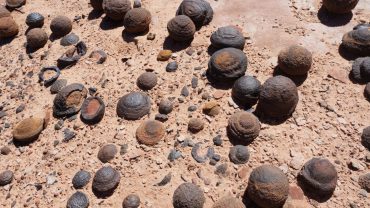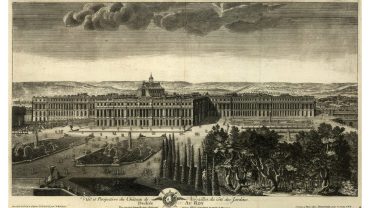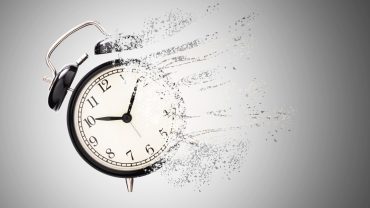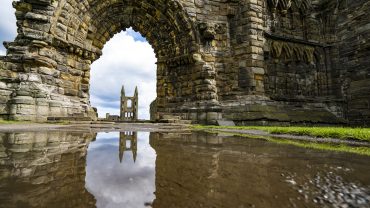As a contemporary and ally of King Arthur and often depicted as the father or Sir Lancelot, the story of King Ban – sometimes referred to as Ban de Bénoïc – is interwoven with the early stages of the Arthurian narrative, contributing significantly to its inception and development.
His origins can be traced back to the thirteenth century Vulgate Cycle, and these texts, which sought to create a comprehensive and coherent narrative from the myriad of existing stories, introduce King Ban as a noble and valiant monarch, whose kingdom of Benoic becomes embroiled in the larger conflicts defining the era of Arthur’s reign.
But who was he? Was King Ban real or was he a fictional construct? Does he have roots in a Welsh myth? Was he the father of Sir Lancelot?
This time-trip back to the Middle Ages attempts to unravel the complex, interwoven threads of fact and fiction surrounding the story of Ban of Benoic.
The Vulgate Cycle: The Origins of the Legend of King Ban

Merlin, magician of Arthurian legend (Credit: Universal History Archive/Universal Images Group via Getty Images)
The Vulgate Cycle, also known as the Lancelot-Grail Cycle, is a monumental series of French prose chivalric romances written in the thirteenth century. They focus on exciting, quest-filled adventures by heroic knights, and these stories are centred around the Arthurian stories.
The Vulgate Cycle includes the History of the Holy Grail, the History of Merlin, the Tale of Lancelot of the Lake, the Quest for the Holy Grail, and the Death of Arthur. Within the Vulgate Cycle, King Ban emerges as a figure of nobility, valour, and tragic destiny.
Ban of Benoic is portrayed as a staunch ally and supporter of King Arthur, playing a significant role in the early struggles that define Arthur’s rise to power. His character is marked by his loyalty, bravery in battle, and the misfortunes that befall him and his kingdom. Perhaps most importantly, King Ban is celebrated as the father of Sir Lancelot, one of the most famous and central characters in Arthurian legend. Through his connection to Lancelot, Ban’s legacy is intertwined with some of the most pivotal and enduring narratives of the cycle, including themes of chivalry, betrayal, and redemption.
The Kingdom of Benoic

Antique map of Ancient Gaul, France (Credit: duncan1890 via Getty Images)
Ban is described as the King of Benoic, a realm that scholars often associate with areas in modern France. According to the Vulgate Cycle, Benoic, variously spelled Benewic, Benoich, Benoit, Benuic and even the Anglicised spelling of Benwick, is somewhere between modern-day Brittany (extending down to an indeterminate point on the western coast of France) and Gaul.
The latter was a vast region encompassing approximately 200,000 square miles of western Europe, including France, the Benelux countries, Switzerland, The Netherlands, Germany and as far east as northern Italy.
The fact that the Kingdom of Benoic is often associated with regions between present-day France and Italy adds a layer of potential historical plausibility to the story, suggesting that the tales of King Ban could potentially be rooted in the experiences of actual monarchies and conflicts during the early mediaeval period. However this conjecture remains entirely speculative and no convincing evidence has ever been found to suggest Benoic was a real place.
The Ban Family Tree

Sir Lancelot du Lake, King Arthur's chief knight (Credit: Hulton Archive / Stringer via Getty Images)
The members of King Ban’s family play a pivotal role in the unfolding of the Arthurian sagas, particularly through his son, Sir Lancelot, one of the most celebrated knights of the Round Table.
Ban’s brother, King Bors of Gannes, is another important figure, sharing many of the noble qualities attributed to Ban. Together, they’re depicted as allies of King Arthur, demonstrating the strong familial bonds that extend into their political and military alliances. Bors’ wife, Evaine, is the sister of Ban’s wife, Elaine, with the latter often portrayed as a devoted and noble queen, which further cements the close ties between the two families.
Lancelot, a central figure in the Arthurian legend, owes his inherited qualities of bravery, loyalty, and chivalry, to his parentage. His adventures, struggles, and the moral dilemmas he faces are reflective of the virtues and trials associated with his family. The narrative of Lancelot, including his love for Queen Guinevere and his quest for the Holy Grail, is deeply influenced by Ban de Bénoïc and Queen Elaine, making the story of Ban’s lineage integral to the Arthurian legend.
A Welsh Connection?

King Arthur (From Livro do Ameiro-Mor), 1509 (Credit: Fine Art Images/Heritage Images via Getty Images)
Roger Sherman Loomis, a prominent twentieth century scholar in the field of Arthurian studies, extensively explored the origins and development of Arthurian legend, and suggested that many elements of Arthurian stories have roots in earlier Celtic traditions.
His assertion that King Ban of Benoic could be a misunderstanding or transformation of Bran le Benoit, which translates to Bran the Blessed in Welsh (Bendigeid Bran), highlights the complex interplay between Arthurian legend and Celtic mythology. In Welsh mythology, Bran the Blessed was a mythological king of Britain. His tale includes elements of giantism, magic, and the mystical qualities of leadership in ancient Welsh lore.
The connection Loomis draws between Bran the Blessed and King Ban suggests that the latter may have been inspired by or evolved from the stories of Bran, with the name and attributes of Bran the Blessed morphing over time and through translation into the figure of Ban.
Like many of the myths and legends that emanated out of the Middle Ages, this connection is pure speculation and part of the broader academic effort to trace the origins and influences of Arthurian legend.
The Death of King Ban

Old tombstone with a dark sky. (Credit: D-Keine via Getty Images)
In the Arthurian legends, King Ban meets a tragic end. His kingdom of Benoic falls to his enemy Claudas, and in the aftermath of this defeat, overwhelmed by the destruction of his realm and the suffering of his people, Ban seeks refuge with King Arthur.
The burden of his loss proves too great, and Ban dies of a broken heart near the mystical Lake of Diana, collapsing under the weight of his despair after witnessing the ruin of his kingdom.
Ban’s death is not just a personal tragedy but also a pivotal event with lasting implications for the Arthurian legends. His body mysteriously disappears after his death, adding a layer of mythic resonance to his story. Most significantly, his legacy continues through his son, Lancelot, who is taken by the Lady of the Lake for protection and upbringing, thereby setting the stage for Lancelot’s emergence as one of the preeminent knights of the Round Table.
It’s worth noting that the inclusion of such dramatic and mystical elements are emblematic of the mythological and allegorical nature of these stories, rather than historical fact.
Was Ban of Benoic Real?

Scene from the Romance of Lancelot of the Lake (Credit: Print Collector / Contributor via Getty Images)
Though his narrative may not be as widely recognised as those of King Arthur, Sir Lancelot, or Lady Guinevere, the contributions of King Ban to the Arthurian world – through his alliances, his sacrifices, and most significantly, his lineage – cement his place within this mythic pantheon.
These epic stories occasionally hint at a potential historical basis for King Ban and his kingdom of Benoic. However, it’s almost universally agreed among historians and scholars that Ban is very much a fictional character, without any direct historical counterpart.
While the Arthurian legends may incorporate elements from historical events and figures, King Ban himself is almost certainly a creation of mediaeval literature and not a real figure from history.












